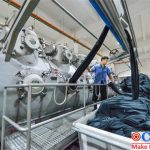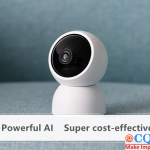How To Build a Brand Supply Chain
Let’s start with our definition of a brand: a brand is the sum of all aspects of a company’s relationships and the result of operational word-of-mouth. In this definition, brand is a comprehensive result. It is not only some means, routines, tools and games of the brand marketing and communication process, but also not only the brand value proposition, cultural precipitation and initial vision, which are only part of the “brand”. After all, if there is no solid “product” without a bright “brand”, such a company will not be able to operate for a few days, and the structure behind it is still a “marketing and cultural media company”.
The brand, especially the consumer brand, what supports its real establishment must be the repurchase built on the pricing right. In order to have such a repurchase, in the end, a poor supply chain is not working. Later, we found that there were many misunderstandings about the supply chain. Today’s article is to talk in depth about the new requirements for the supply chain.
What Is The Brand Supply Chain?
If “brand and marketing” brings honor, then “supply chain” brings quality. Honor, after all, it is up to someone else. That’s why start-ups now also like to say “quality”. “We have a strong supply chain advantage” is the most commonly said phrase. Only after a careful questioning did we find that they refer to their own stable foundry.
Foundry, is a strong supply chain? The other party further added: the foundry is run by one of my friends, I even took a stake in it.
Is a foundry that has a stake in it a strong supply chain? If the foundry is a strong supply chain, then the thousands of mature foundries in all industries in China, together with branding and marketing, can all become “brands” immediately?
In fact, a stable foundry is only one part of the supply chain. A good supply chain often has the ability to mobilize dozens or even hundreds of foundries at the same time (many start-ups do not realize this). The supply chain is defined on the Internet as “a network chain structure formed by upstream and downstream companies involved in the production and distribution process to provide products or services to end users”.
Let’s look at the last main phrase together: network chain structure. What is the meaning of net-chain structure? It is only when a bunch of messy things are looped together that it is called net-chain structure. So, what is supply chain? In the end, it is an organizational capability.
Further clarification: when we talk about the supply chain capability of a brand, what are we talking about? A really strong supply chain advantage means: a high degree of product development and innovation ability + production combination ability that can cope with large-scale output.
Large-scale output means: to achieve large quantities of goods, whether the standard can be consistent or not, quality and quantity is not out of line?
High R & D innovation means: high frequency output to adapt to the market of innovative products.
Production portfolio refers to: the ability to combine and coordinate the regular delivery of each foundry under various conditions such as cost and schedule constraints.

Scarcity Of Brand Supply Chain
Each industry has its own business barriers. For example, if you are a foundry, a good foundry has accumulated a set of strict management system and the ability to produce quickly according to the requirements. But this is only one ability, not enough to support a brand. Some start-up brands will add consumer insights and product innovation in the front section, which involves research and development. Here’s the point: R&D for Internet or other virtual products can be done quickly by iteration and trial and error.
But physical products, trial and error costs a lot. Often in the laboratory and in the production plant, two results will come out. And repeated testing of these two results often consume a lot of money, so industry experience will be particularly important. That’s why the R&D departments of the real industry are often staffed by people who have more than a decade or even decades of experience.
Many start-ups will export innovative concepts, ideas and new consumer-based ideas. Some of these new ideas do not involve product transformation and can be implemented immediately. For example, revamping the sales model: flower subscriptions, food and beverage takeaway. There are also some shallow product-based modifications that can be done, such as adjusting the cost of certain additions to a recipe. However, once it comes to real product innovation, it still takes a lot of time and experience.
Why Should We Discuss TheBrand Supply Chain?
We should wake up to the fact that the arrival of the Internet has greatly improved marketing efficiency, but the roots of R&D innovation have not been touched in the slightest. What we should also realize is that: the addition of the younger generation, the vision and aesthetic taste has improved, making the brand’s cognition upgrade rapidly, but for the organization of the supply chain, it still needs industry “veterans”.
If we follow the above definition of supply chain, in fact, the number of companies and people who really have the comprehensive ability of supply chain is not many. This “product manager” , in the past, emphasized the traditional industry of “specialization”, there were really not many. In the past, the traditional industry, we were strictly in accordance with the production classification to practice the ability, few people “crossed line” to see.
For example, the shoe industry, for example, doing leather shoes and doing sports shoes, is almost unrelated to the two trades. It is not easy to find companies and individuals who know both. Nowadays, consumers want everything.
After a brand has a corresponding group of audience, what it needs is to meet the audience in all aspects, at this time, the organization of the “supply chain” is a great challenge. This is also an important reason for the lack of innovation of some old brands with vertical “professional direction” as the core in the past.

The real supply chain master has not yet entered
Although the capital is now in full swing and all platforms are incredibly lively,in fact, the innovation of the brand side has just begun. The current new consumer products have only just made a head start, and the tip of the iceberg has just been revealed. Where is the strong supply chain capability that is scarce as mentioned above?
We might as well divide the whole brand upstream supply chain into: insight – research and development – innovative products – organization of production – -Commercialization adjustment of such process. The vast majority of Chinese OEMs in the past actually undertook the task of organizing production after receiving orders, which meant their core competence was: trade + production.
The pure trading company doesn’t have the supply chain capability. The core competence of pure trading companies is: business + trade management.
There is such a kind of companies.
In the process of undertaking trade (especially foreign trade) orders, gradually develop a set of production plant coordination and management capabilities, as well as the ability to grasp product trends. Slowly in the trade role from the passive organization of OEM, developed into the role of product development and innovation, and become a lot of big international brands relying on the supply chain forces.
Such companies and individuals, however, are still engaged in international trade, mass organization of production, etc. The vast majority of these companies and individuals have not yet really entered the market in terms of the general trend of new brand creation. If we believe that there is a “threshold” in any industry, then the “supply chain” threshold has not yet been established for many new brands today.
In our opinion, there are three hurdles to build a new brand, especially for a new consumer brand.
One is the supply chain, to test the product.
The second is the brand culture and value proposition, which tests the content.
The third is the capital capability, to test the competitive advantage.
These three hurdles are in a progressive order of importance. With the ability of “supply chain” and “brand” of most companies, it is really not yet to the extent of fighting capital. But we believe that in the next five to ten years, good brands will surely come one after another.
CQI5 is committed to providing importers worldwide with product quality inspection services that far exceed those of our peers. If you are planning to import or have imported from China or Southeast Asian countries, please contact us cs’@’cqipro.com to learn more about how we can make your imports safer.
Disclaimer:
CQI5 article information from the Internet and contributions, the copyright of which belongs to the original author, and only represents the views of the original author. This website is only responsible for sorting out, typesetting and editing the articles, reproduced for the purpose of spreading more information, does not imply that it endorses its views or proves the truthfulness, completeness and accuracy of its content, and therefore does not assume any legal responsibility.
The information contained in this article is for reference only and is not intended as direct advice for decision-making.
If we inadvertently violate your copyright, please inform us, after verification, we will immediately correct or delete the content according to the requirements of the copyright holder, thank you! Contact, email: copyright@cqipro.com
This website has the final right to interpret this statement.
Welcome to reprint, Please be sure to keep information complete.






